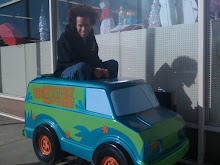- Avoid eye contact. In this situation, eye contact is perceived as a challenge.
- Avoid stopping. Stopping is an invitation for conflict.
- Position your vehicle as far away as you can from the aggressive driver. Change lanes and slow down.
- If you exit, locate a highly populated area. Do not exit your vehicle, it provides you with protection and a way to exit the scene if your vehicle is assaulted.
- In extreme situations, if you are having trouble removing yourself from the aggressor, drive to a location where you will have witnesses. The presence of other people could defuse the situation and provide you with assistance if needed. Ideally, find a location where law enforcement officials are typically present such as a police station, court house, inspection station or hospital emergency room.
- While locating a safe, populated location, know your location and dial 911. Describe your situation and request assistance. Do not engage or confront the other driver. Ensure you have an exit route until police arrive.
- Do not drive directly home or to work.
Don't Ask for Trouble
While you are driving be courteous and conscious of your driving behavior. Avoid the following invitations for road rage:
- Tailgating
- Cutting other drivers off
- Changing lanes without signaling
- Frequently changing lanes by weaving back and forth
- Making a turn from the wrong lane
- Traveling in the left lane at a slow speed
- Driving behind or toward other cars with your headlights on "high beam" at night
- Blasting your horn
- Slowing down in front of others right after you pass them
- Reacting too slowly after the red light turns green
Rest Areas
Rest Areas
Rest areas are open, convenient and accessible to all motorists, regardless of age, disability or language. Good lighting and security features allow comfortable use 24 hours a day.
The rest area system provides public stopping opportunities where they are most needed, usually between large towns and at the entrance to major metropolitan areas.
Rest areas provide telephones, maps and public information. Information generally includes roadway conditions, tourist and recreational opportunities, motorist-related commercial services, public service bulletins, missing children information and information about the local history, culture and regional environment.
Aren't rest areas homosexual hangouts. They forgot to add that. LOL


No comments:
Post a Comment